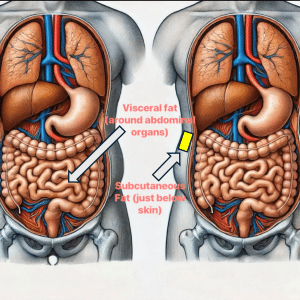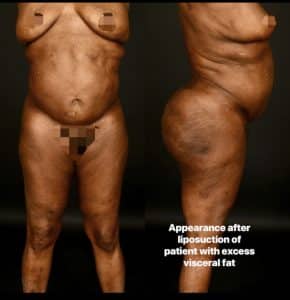As a board-certified plastic surgeon, I, Dr. Sam Jejurikar, perform a high volume of tummy tuck procedures, helping patients achieve a flatter, more contoured abdomen. I’m fortunate to have been selected to D Magazine’s Best Doctors list for the past five years and Newsweek’s Best Plastic Surgeons list for the past three years. When considering a tummy tuck, it’s important to understand the different options. What are the differences between, mini, traditional, extended and circumferential tummy tuck? The main difference between each type is incision length, but all allow for muscle tightening (rectus plication) and liposuction to enhance results.
Mini Tummy Tuck: Subtle Enhancement with a Small Incision
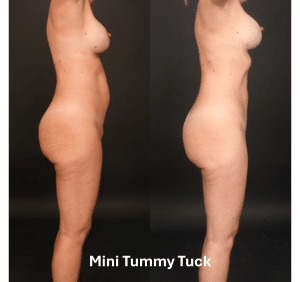
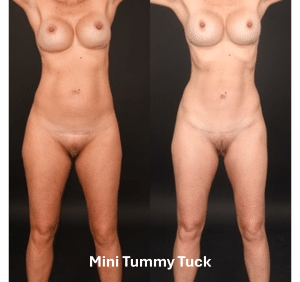
A mini tummy tuck is ideal for patients with mild skin laxity below the belly button. The incision is short, similar to a C-section scar. This procedure removes excess skin, tightens lower abdominal muscles, and preserves the belly button. While there’s no incision around the belly button, I can perform an umbilical float (navel repositioning), slightly lowering it for a more natural result.
Ideal Candidate:
✔ Mild skin laxity below the navel
✔ Shorter recovery than a full tummy tuck
✔ Close to ideal body weight with limited need for skin removal
Traditional Tummy Tuck: Comprehensive Abdominal Rejuvenation
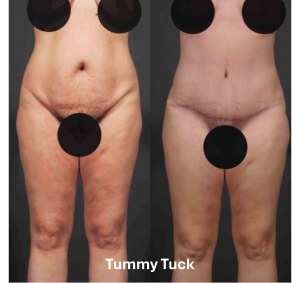
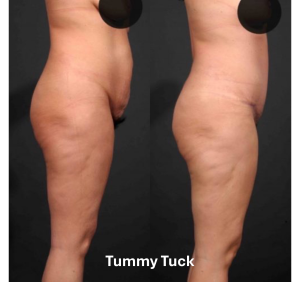
A full tummy tuck removes excess skin and tightens muscles from the ribcage down to the pubic area. The incision runs from hip to hip but stays low enough to be hidden by most underwear and swimsuits. The belly button is repositioned, ensuring a natural appearance. While this procedure dramatically tightens the front of the abdomen, it does not provide as much contouring to the sides or waist.
Ideal Candidate:
✔ Excess skin and muscle laxity after pregnancy or weight loss
✔ Desire for a flatter, firmer abdomen
✔ Needs full rectus muscle repair but not much lateral contouring
Extended Tummy Tuck: Dramatic Hourglass Contouring
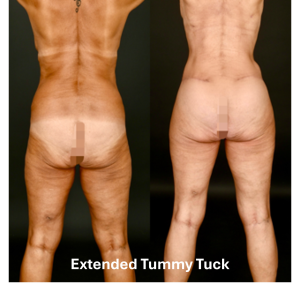
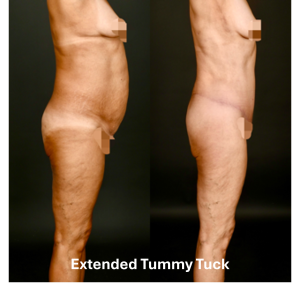
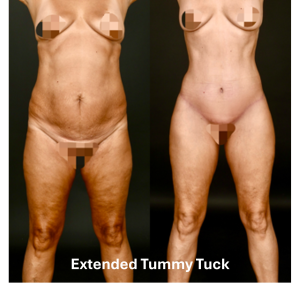
An extended tummy tuck goes beyond the traditional approach by removing excess skin that extends past the abdomen to the sides of the waist. The incision reaches beyond the hip bones, allowing for enhanced sculpting of the flanks and waistline. This procedure is excellent for patients seeking a dramatic hourglass figure and greater definition beyond the front of the abdomen.
Ideal Candidate:
✔ Loose skin extending past the abdomen
✔ Desire for more contouring along the waist and hips
✔ Desires dramatic reshaping of body to create an hourglass silhouette
Circumferential Tummy Tuck: 360-Degree Contouring with Gluteal Enhancement
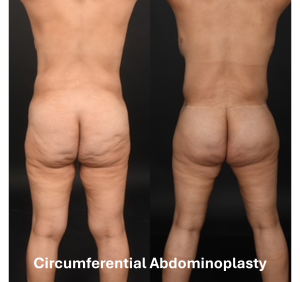
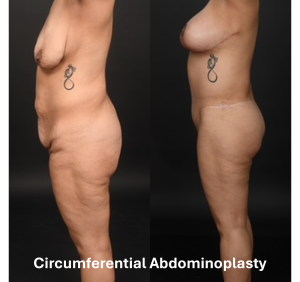
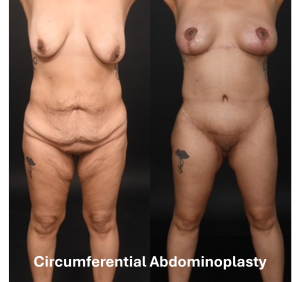
A circumferential tummy tuck, also called a body lift, removes excess skin from the abdomen, sides, and lower back. The incision extends around the entire waistline, providing a full 360-degree transformation. In addition to creating a flatter, firmer midsection, this procedure allows for gluteal autoaugmentation, where excess tissue from the lower back is used to naturally enhance the buttocks. This option is especially popular among patients who have experienced massive weight loss.
Ideal Candidate:
✔ Significant skin laxity in the abdomen, back, and flanks
✔ Desire for full lower body contouring
✔ Interest in a natural buttock enhancement through autoaugmentation
✔ Stable weight after major weight loss
Choosing the Right Tummy Tuck
The best procedure depends on how much excess skin you have, muscle separation, and your overall goals. I perform muscle tightening and liposuction with all tummy tuck procedures to achieve the best contour possible.
If you’re considering a tummy tuck, I’d love to discuss your options. Schedule a consultation by calling us at 214-827-2814 to create a customized plan for your transformation.

